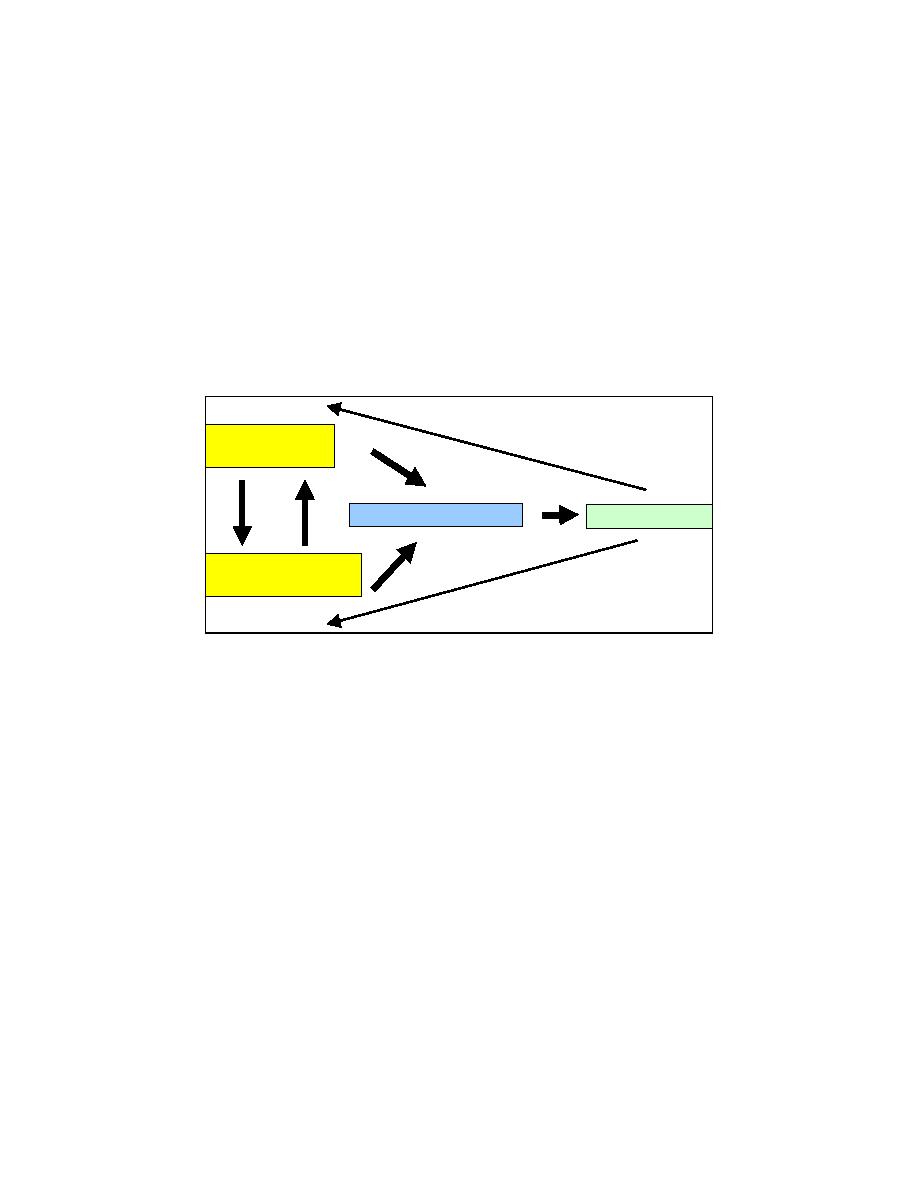
Inlet Modeling System (IMS)
The IMS is the CIRP's centralized location of major multi-dimensional models. The IMS
work unit is developing a robust suite of models for calculating hydrodynamics, sediment
transport, and morphology change at inlets. A typical time frame for the IMS is a tidal cycle,
though a series of storms, to several years. The goal is being met by a nested approach whereby
a regional grid provides accurate tidal and storm boundary conditions to a local model nested
over the project area. The CIRP is developing "community" model grids that are regional in
scope and encompass numerous inlets at which detailed local (nested) grids can be developed.
Coupling of waves and currents has been accomplished so that wave-induced currents and water
level are calculated with the tidal and wind (and riverine, if present) circulation. The next phase
of CIRP research is to develop and couple sediment transport and morphology change models to
the hydrodynamic suite (Fig. 8).
ADCIRC
Tidal circulation
model
Sediment transport module
Morphology update
Steady-state
spectral wave model
STWAVE
Fig. 8. Components of the Inlet Modeling System
The SMS Steering Module was developed to automate repetitive user tasks and facilitate data
sharing between circulation and wave propagation numerical models. At present, the Steering
Module couples the ADvanced CIRCulation (ADCIRC) model (Luettich, Westerink, and
Scheffner 1992) and the STeady-state spectral WAVE model (STWAVE) (Resio 1988; Smith,
Sherlock, and Resio 2001). Ongoing work will couple other Corps of Engineers circulation and
wave models. ADCIRC is a time-dependent, finite-element numerical model that computes
water surface elevations and velocities. STWAVE is a steady-state finite-difference model that
calculates wave spectra at each cell in a square grid. STWAVE is driven by offshore wave
spectra and local winds and has provision to accept optional current vector fields.
The Steering Module facilitates input/output sharing, as well as interpolation, between
ADCIRC and STWAVE (Fig. 8). Coupling can be done one-way, to examine modification of
one property on another (such as modification of the waves by the current, or of the current by
the waves), or two-way, which provides feedback of information to both models. ADCIRC can
be forced by input of the wave radiation stresses produced by STWAVE to add to the tidal- and
wind-induced currents. The current fields computed by ADCIRC can serve as input to
STWAVE to simulate wave transformation on a current. ADCIRC and STWAVE coupling has
been tested on idealized inlets as well as in the project environment. The modification to ebb
and flood currents by waves is shown in Fig. 9 and Fig. 10, respectively, for an idealized inlet.
9



 Previous Page
Previous Page
